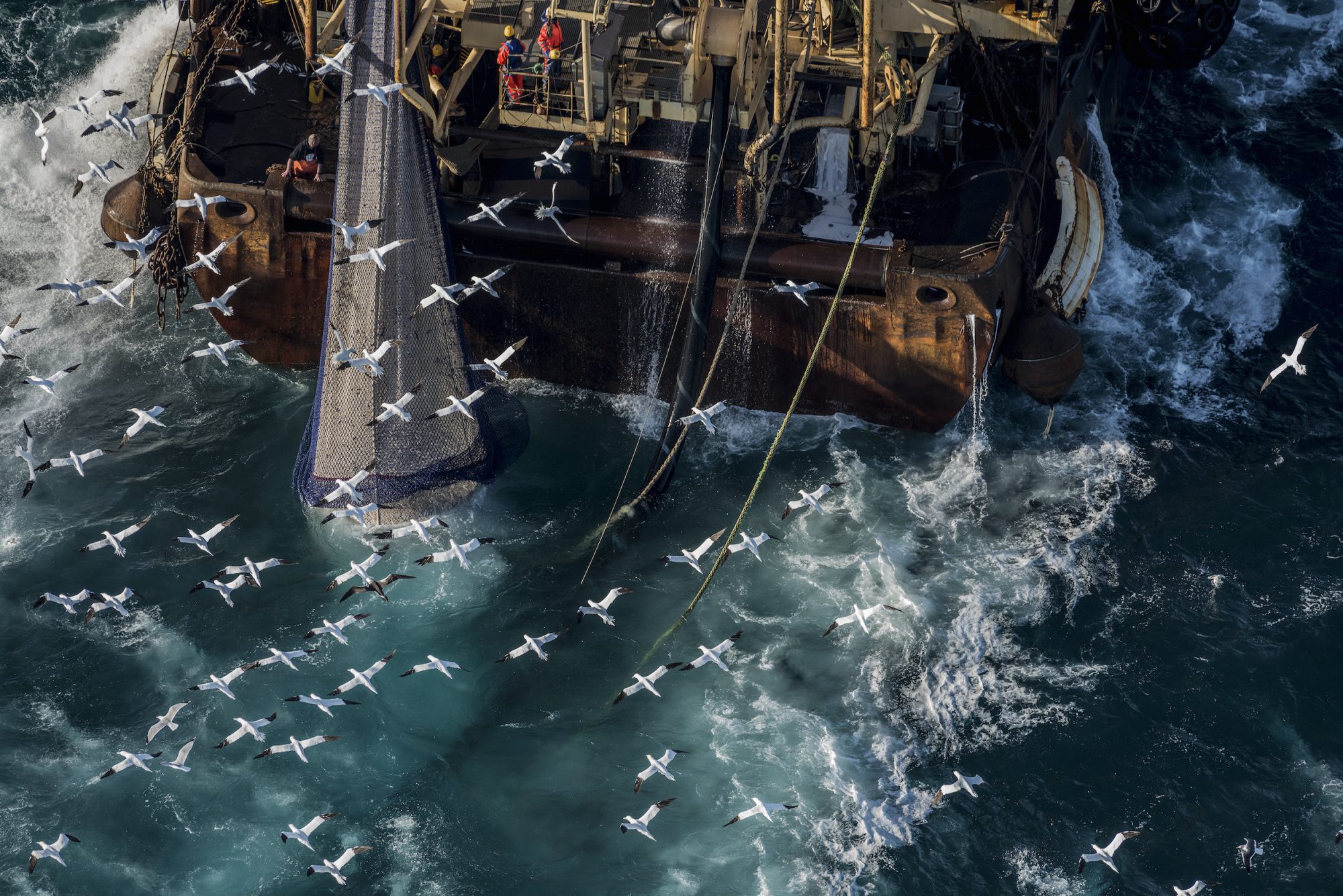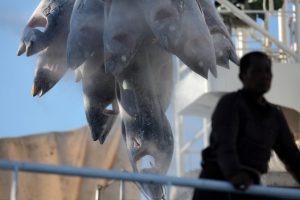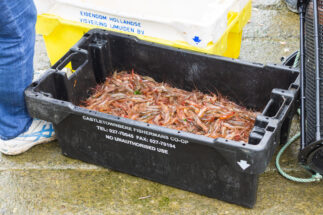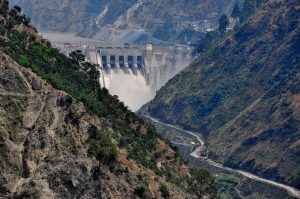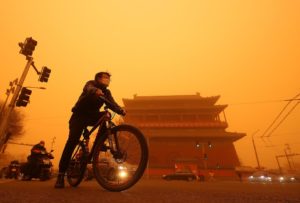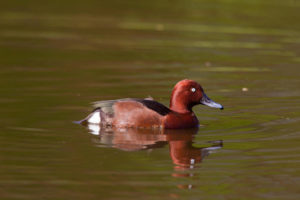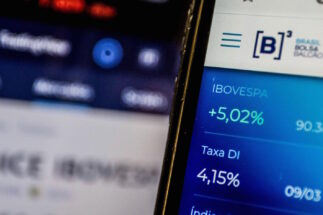A 360-degree camera observes the deck of a boat off New Zealand. As the fishers bring up their lines, they find they have ensnared a black petrel. The bird, with its black feathers and pale-yellow hooked beak, breeds only in New Zealand and is one of about 5,000 adults worldwide. Nobody on board noticed it diving into the water and getting trapped. The boat’s main fishing line is tens of kilometres long, with thinner subsidiary lines branching off. From these lines hang barbed hooks.
The New Zealand government and conservation bodies have been working to reduce rare bird bycatch. The fishers hurry to remove the petrel and return it to the ocean before the onboard observers see what’s happened. But the camera sees and uploads all.
The authorities hope to use electronic monitoring like this to find out how many black petrels die every year after being caught in fishing gear, and if the fishing vessels are taking measures to prevent it.
Thankfully, this was just a drill, the bird a dummy brought on board by the crew. They’re working with the government, helping to train software to identify black petrel bycatch.
The fishing industry needs remote oversight
Chris Rodley, head of SnapIt, the company developing the system, described that scene in conversation with China Dialogue. He explained exercises like it are essential to make up for the lack of a video archive to inform the software. As things stand, the authorities need to watch hours of video manually. Machine filtering can greatly reduce the time it takes to perform the task.
Electronic monitoring could help keep tabs on catches, too. Vessel monitoring systems currently in widespread use tell regulators where a vessel is and how it is operating, but can’t assess catches. Fishing logs can fill in that gap though cross-verification is hard. Actual catches can be checked against logs when the vessel arrives in port, but fish may be dumped at sea, or illegally transshipped to another vessel.
By combining location data with image recognition and other technologies, electronic monitoring would allow authorities to watch the boat as it operates and spot illegal fishing or the dumping of catch. As artificial intelligence improves so will the possibilities. Those who research fishing sustainability have high hopes.
Electronic monitoring can’t be bribed, threatened, get sick, and it doesn’t need to sleep. That’s very, very powerful.
Fishing observers act as emissaries of the authorities and can be very effective at tackling fisheries abuses. But there are only around 2,500 of them worldwide, compared to hundreds of thousands of fishing vessels. It is lonely work, sometimes involving intimidation and even death. A Taiwanese media outlet, The Reporter, found that 14 observers went missing or were harmed while working between 2010 and 2020.
Over the last year, the pandemic has forced government and fishery organisations to cut back on observation. For example, the Western and Central Pacific Fisheries Commission based in Micronesia sent observers back to their home ports for more than half of last year. An important method of keeping an eye on fishing, both in national waters and on the high seas, was lost.
Mark Zimring, large-scale fisheries director for The Nature Conservancy, said that “electronic monitoring, either used independently or as a complement to observers, can’t be bribed, threatened, get sick, and it doesn’t need to sleep. That’s very, very powerful.”
Getting ahead of the game
Electronic monitoring is not entirely new. Trials were run on sablefish and Dungeness crab vessels in Canada 30 years ago. In recent years, some Pacific Island nations have been taking the lead. In 2018, the president of Micronesia announced that by 2023 his nation would have full in-person or electronic monitoring of all tuna fishing vessels in its waters. He called on other small island nations to do likewise, so as to make the industry more transparent. Micronesia’s waters are known for their tuna stocks. Every year fishing licences are granted to about 100 vessels from around the world, but electronic monitoring is still only carried out on a few.

“The withdrawal of observers due to the pandemic highlights a need for alternative means of fishery monitoring; electronic monitoring is a suitable option in such cases,” said Eugene Pangelinan, deputy director at Micronesia’s National Oceanic Resource Management Authority. He told China Dialogue that political will is important if electronic monitoring is to be expanded.
But even in high-value fisheries, employing onboard observers can be prohibitively expensive. In the US, costs could reach $700 a day for a single observer. Electronic monitoring is much cheaper.
In 2019, fishers in Maine worked with researchers to test electronic monitoring. Local scallop populations were once almost destroyed by overfishing, but the shellfish has returned thanks to conservation measures and warming waters. Regulators, researchers and fishers all know they need better data to manage fishing and ensure the damage does not reoccur. The fishers see supporting these trials as in their own interests. Mary Hudson, director of fisheries programs with the Maine Coast Fishermen’s Association, was involved in the trial. In a podcast, she said that scallop vessels in Maine are not currently required to have observers on board, but the fishers know it will happen sooner or later. “So,” she said, “they wanted to get ahead of the game, start testing out using cameras for monitoring so that when the time came, they wouldn’t have to have observers on their small boats.”
The implementation challenge
The large-scale roll-out of electronic monitoring has been slow. This is concerning given the scale of the problem.
In 2018, the global recorded fishing catch reached 85 million tonnes. Much fishing activity goes on unmonitored. Research from 2016 found that as much as one-third of the global fishing catch may be unreported.
Zimring told China Dialogue that only 2,000 fishing vessels globally have the technology installed. The Nature Conservancy is working so that all large fishing vessels have it installed in the next five to ten years. There are around 100,000 such ships, some as long as 130 metres with a catch capacity of over 2,000 tonnes.
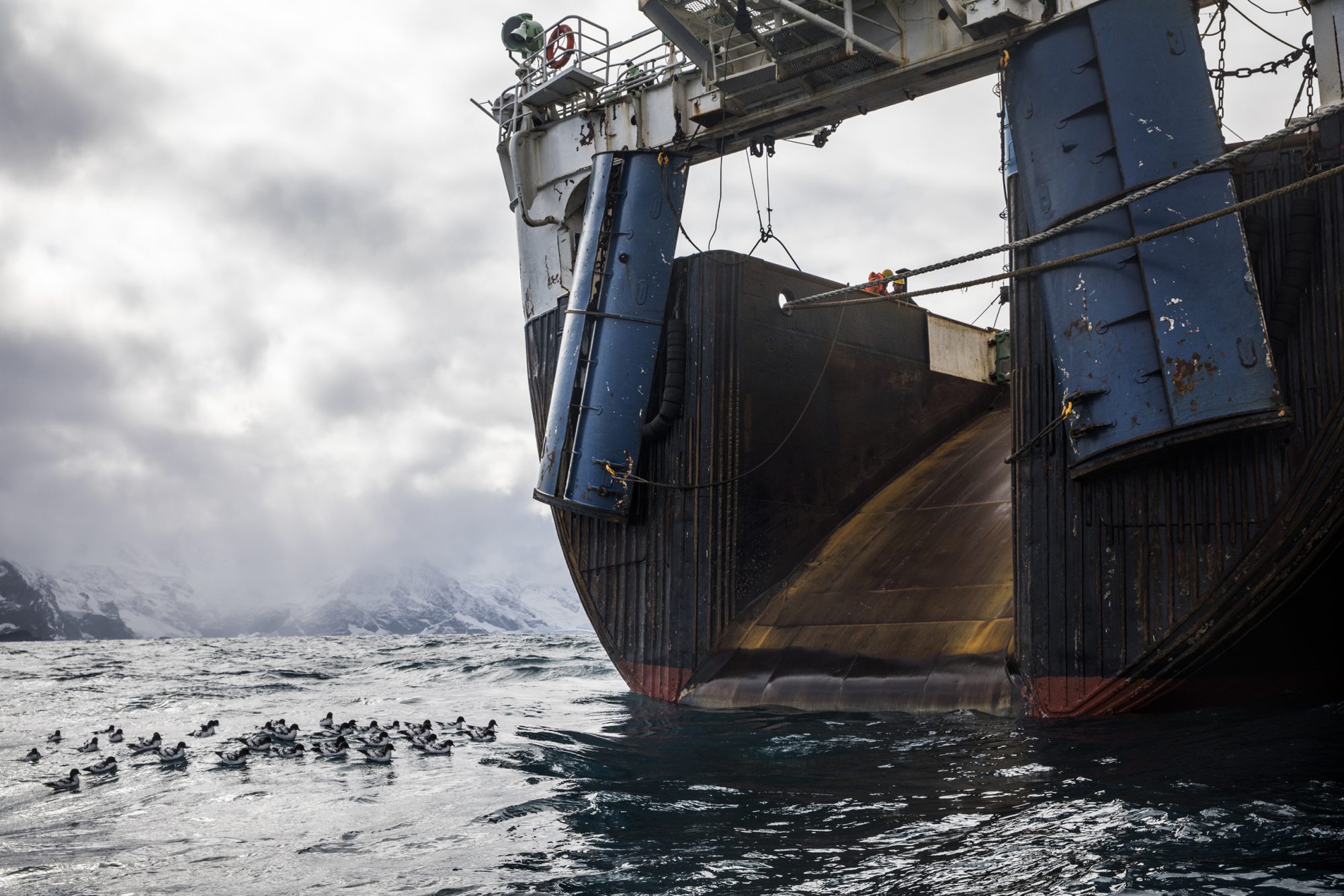
“The challenges [with expansion of electronic monitoring] are political, not technological,” Zimring said. He told China Dialogue that stakeholders all have their own interests. For the boat owners, there are issues of crew privacy and information security. And in some countries, the political will is lacking.
Countless Chinese fishing vessels are at work in China and elsewhere. Official data shows the country had over 140,000 fishing vessels of all sizes as of the end of 2019, with 2,701 of these being registered for distant-water fishing. Although monitoring and transparency are on the increase, there is much room for improvement. A Chinese expert who wanted to remain anonymous, points out that the authorities are often unable to confirm that the fishing logs submitted by vessels are accurate, yet “whatever goes in the logs ends up in the statistics.”
She says for China, only a few distant-water vessels, and even fewer coastal boats, are trialling electronic monitoring. Many vessels have installed cameras of their own accord, but only for the captains and owners to use to manage the crew and ensure safety. The images are rarely saved and are not passed on to the authorities.
Another Chinese researcher, who preferred not to be named, said the AI which electronic monitoring relies on needs to be improved. For example, accuracy of analysis during different weather conditions has to get better. But he emphasised that the bigger challenge is defining each party’s rights. For instance, how should disputes over information gathered by electronic monitoring be settled? “There’s a long way to go yet,” he said.
Despite the challenges, there are no better alternatives in sight. Zimring stressed that in the current circumstances “we’re not choosing between observer and electronic monitoring. We’re choosing between no monitoring and electronic monitoring.”
